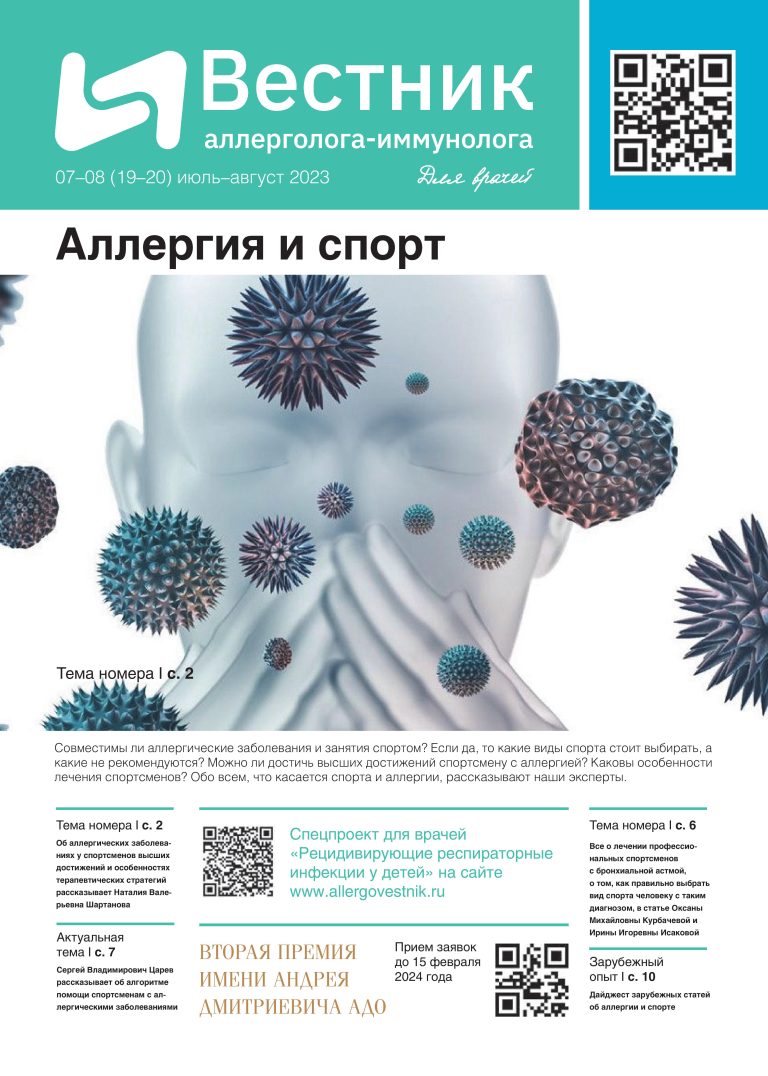 Medtouch
Medtouch Allergic rhinitis in overweight/obese children: phenotypic characteristics.
Author: Koroleva Anna Evgenievna1
Co-authors: Bekezin Vladimir Vladimirovich1, Sergeeva Irina Nikolevna2, Meshkova Raisa Yakovlevna1
1Federal State Budgetary Educational Institution of Higher Education «Smolensk State Medical University» of the Ministry of Health of the Russian Federation,
2Regional State Budgetary Health Institution «Children’s Clinical Hospital»
Russia,Smolensk
The researches addressing to study the allergic rhinitis in children with obesity there are deficiency and have contradictory character [1, 2]. The aim of our reserach was to study the effect of obesity on the severity, the type of sensitization, the cytokine profile and the level of adipokines in children 4-10 years old with AR. Assess body composition in children with AR and obesity.
The study included 122 children aged 4-10 years. ELISA was used to assess the level of IL-1β, IL 33, IL 6, TNF-α, total IgE, adiponectin, and leptin in blood serum. Allergological examination with aeroallergens was performed by skin testing. The bioimpedancemetry was used to assess the body composition. The Statistica v.6.0 (StatSoft Inc.) statistical package was used for statistical analysis.
Increase in the percentage of body fat mass (% FM) occurs in 63.7% of children with AR. Excess adipose tissue affects to the severity of AR, namely: a persistent AR (PAR) was detected in 75% of cases, while an intermittent AR (IAR) was found in 25%, p=0.045. For the first time, it was found that the concentration of IL-33 in children with PAR and obesity was significantly lower than in IAR (respectively: 9.65 pg/ml and 10.9 pg/ml, p=0.039). Serum IL33 was negatively correlated with %FM (r=-0.667, p=0.035) in children with IAR and obesity.The study of the cytokine profile in children with AR and obesity showed that the level of IL1β in PAR was higher than in children with IAR (respectively: 0.057 pg/ml and 0.024 pg/ml, p=0.009), which is consistent with the literature data [3]. The level of leptin in children with AR and obesity significantly exceeds the corresponding indicator in children with AR and normal body weight (respectively: 170.9 pg/ml and 75.6 pg/ml, p<0.0001).It was found that the level of IL 6, TNF-α, total IgE, adiponectin in children with AR and obesity did not differ from those in children with AR and normal body weight. It was shown that a feature of sensitization in children with AR and obesity is the predominance of the monovalent type of sensitization (60% of children), compared in children with normal body weight (22.7%), p<0.05. Additionally, in children with PAR and obesity there are changes in the body composition due to a decrease in the proportion of AСM (active cell mass). Thus, in children with AR and obesity, the proportion of ACM was significantly lower in PAR (10.68%) compared with IAR (12.2%), p=0.014.
The phenotypic characteristics of AR in children with obesity include the predominance of persistent AR and monosensitization, a decrease in the level of IL33 and an increase in IL1β in blood serum, as well as a change in body composition due to a decrease in the proportion of AСM. The identified phenotypic features will allow to consider children with AR and obesity as a separate dispensary group and to develop personalized ways of therapy.
Bibliography.
1. Lei, Y., Yang, H., & Zhen, L. (2016). Obesity is a risk factor for allergic rhinitis in children of Wuhan (China). Asia Pacific Allergy, 6(2), 101–104. https://doi.org/10.5415/apallergy.2016.6.2.101
2. Zhou, J., Luo, F., Han, Y., Lou, H., Tang, X., & Zhang, L. (2020). Obesity/overweight and risk of allergic rhinitis: A meta-analysis of observational studies. In Allergy: European Journal of Allergy and Clinical Immunology (Vol. 75, Issue 5, pp. 1272–1275). Blackwell Publishing Ltd. https://doi.org/10.1111/all.14143
3. Han, M. W., Kim, S. H., Oh, I., Kim, Y. H., & Lee, J. (2019). Serum IL-1β can be a biomarker in children with severe persistent allergic rhinitis. Allergy, Asthma and Clinical Immunology, 15(1). https://doi.org/10.1186/s13223-019-0368-8
Читайте также
Аспекты иммунного статуса при фенотипе бронхиальной астмы...
Автор: Чурюкина Элла Витальевна
ФГБОУ ВО «Ростовский государственный медицинский университет» Минздрава России,
ФГБОУ ВО «Кубанский государственный медицинский университет»
...
Aspects of immune status in the phenotype of bronchial...
Author: Churyukina Ella Vitalievna
Federal State Budgetary Educational Institution of Higher Education "Rostov State Medical University",
Federal State Budgetary Educational...









Комментарии (0)